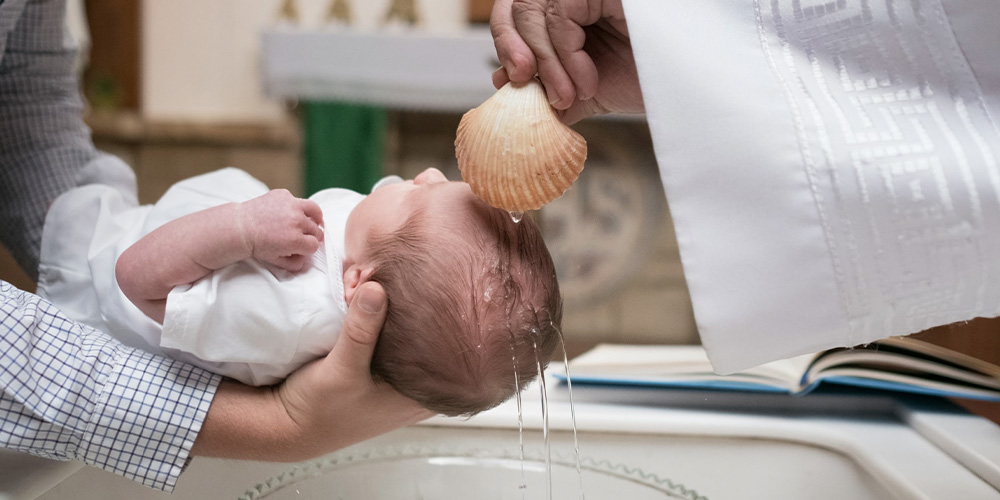 |

Imagine a Lutheran pastor beginning a baptism service by blowing three times under the child’s eyes and then commanding the unclean spirit in the child to depart and make room for the Holy Spirit. Imagine the pastor then putting a pinch of salt in the child’s mouth to symbolize wisdom from God.
Let your imagination run a little more. Picture the Lutheran pastor again ordering the devil to leave the child who is to be baptized. But there’s more. The pastor moistens the tip of a finger with saliva and touches the ears and nose of the child, followed by another rebuke of the devil. The pastor anoints the child with oil and then finally applies the water and Word of Baptism.
Following the baptism, the child is outfitted with a white garment, symbolizing the robe of righteousness Jesus won by his holy life and sacrificial death. The finishing touch is a lighted candle that is placed in the hands of the child (held jointly by the parents, one would assume).
None of these practices are mere products of the imagination. Five hundred years ago, in 1523, Martin Luther translated from Latin into German the Roman Catholic Church’s Baptism rite. Luther retained the contents of the rite—partly described above—but made the rite understandable for the common people in Germany by recasting it in their language.
Three years later, in 1526, Luther revised this rite and removed some of the customs. The result is an order of Baptism that you and I would recognize in a Lutheran church today.
I believe the story of how Luther revised this Baptism rite contains lessons for Lutheran Christians today.
For starters, there is a great deal of Christian freedom in the administration of Baptism. Jesus did not even prescribe how to apply the water of Baptism. There is freedom to sprinkle, pour, or immerse in water. There is freedom to add customs that are scriptural, meaningful, and sensible.
In addition, the story of the 1523 Baptism rite teaches how change in the church can be implemented positively. In short, it is done slowly and preceded by education. A survey of Lutheran Reformation history reveals that Luther did not make wholesale changes to liturgies and church practices overnight. Such changes could have disturbed the faith and trampled on the consciences of a good many people. When church leaders take time to explain the rationale for and the benefits of change, then people can see valid reasons to embrace change.
Finally, the story of Luther’s Baptism rite reminds us of what is important and essential when it comes to Holy Baptism: water and the Word of God. During my parish ministry, I administered Baptism in hospital rooms with a Styrofoam bowl containing water. I recall a baptism in a private home where a beautiful crystal bowl in the living room served as a font. I baptized children and adults in beautiful surroundings in churches where there were traditional fonts. While these settings varied, water was applied in the name of the Father and of the Son and of the Holy Spirit. That is what really mattered.
With bells and whistles, with modest customs, or in stark simplicity, Baptism is a gracious gift from God. As Luther would explain in his Small Catechism in 1529, “Baptism works forgiveness of sin, delivers from death and the devil, and gives eternal salvation to all who believe this, as the words and promises of God declare.” It is good to remember a Baptism rite. It’s even better to remember our baptisms.
Author: James Pope
Volume 110, Number 09
Issue: September 2023
- What to know before you go
- Preachers and listeners
- “You came to visit me”
- One little word
- Appreciating the clouds
- Examined and confirmed
- The heavenly gardener
- Jesus wept
- A memorable Trinity Sunday sermon
- Sympathy +
- Remembering a rite
- Pastor and wife appreciation month
- Thankful saints
- Opening doors in Advent and beyond
- Practicing Christian freedom
- He loves me, he loves me not







